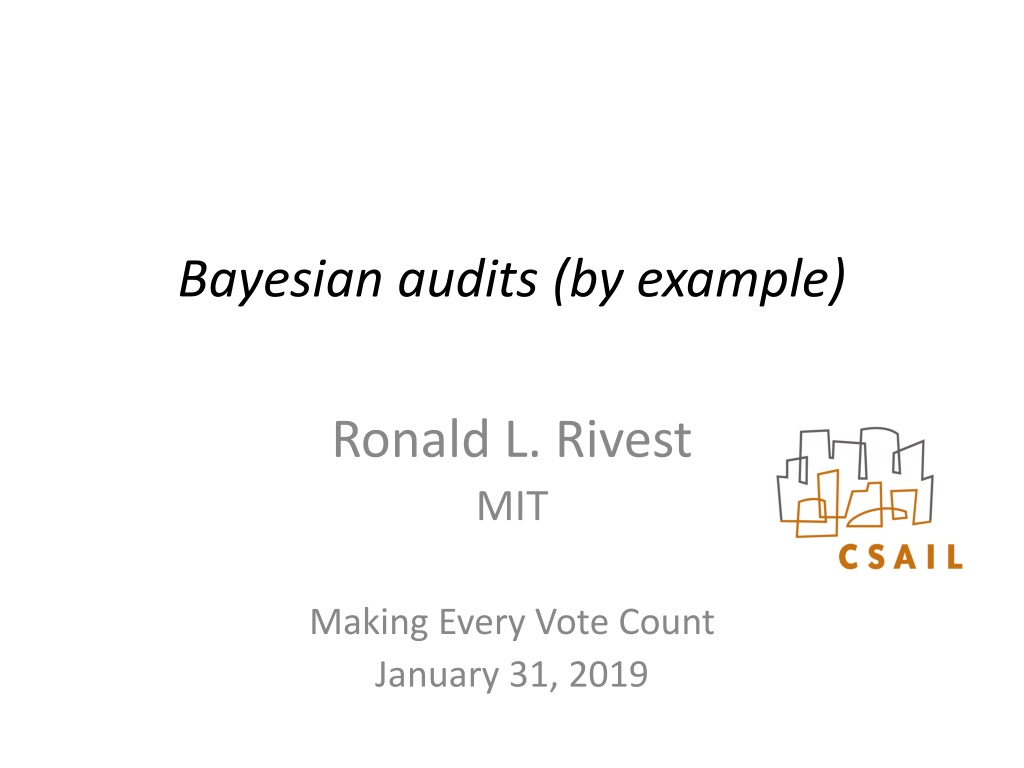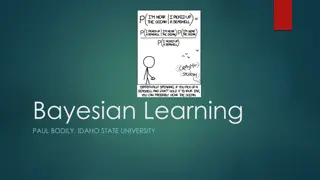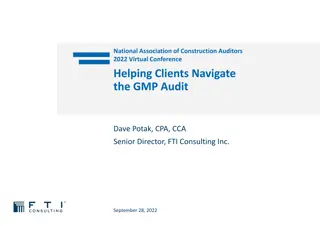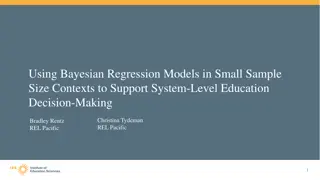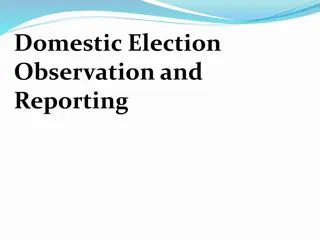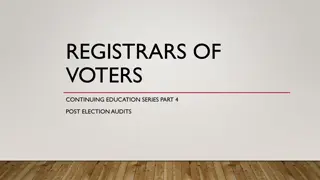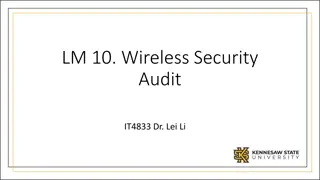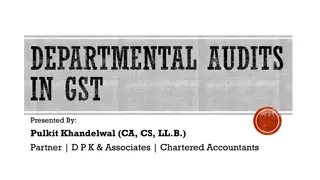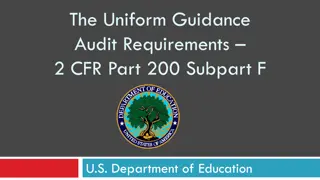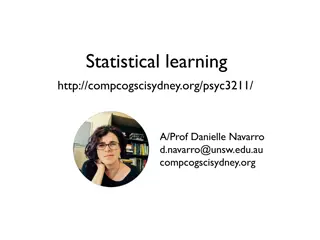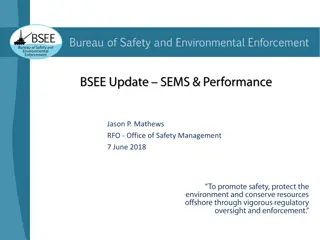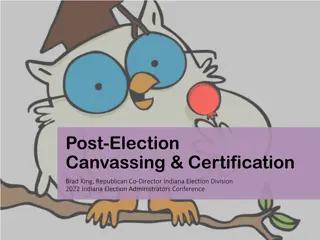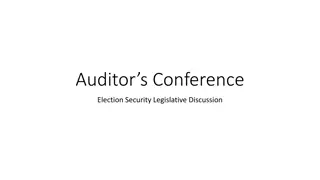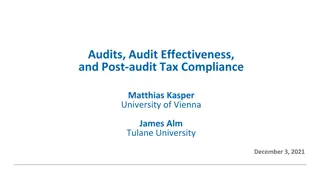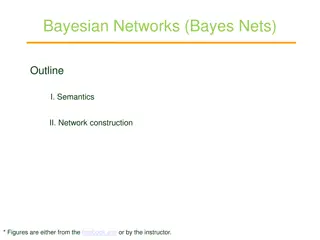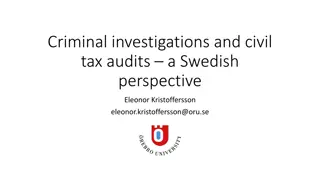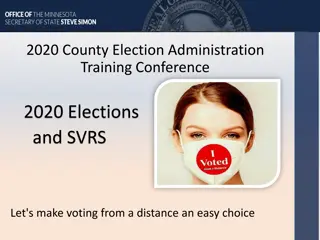Understanding Bayesian Audits in Election Processes
Bayesian audits, introduced by Ronald L. Rivest, offer a method to validate election results by sampling and analyzing paper ballots. They address the probability of incorrect winners being accepted and the upset probability of reported winners losing if all ballots were examined. The Bayesian method, like ballot polling, involves drawing samples, simulating remaining ballots, and measuring the fraction of times the reported winner loses. These audits can be applied to various voting systems and offer a nuanced approach to election result verification.
Download Presentation

Please find below an Image/Link to download the presentation.
The content on the website is provided AS IS for your information and personal use only. It may not be sold, licensed, or shared on other websites without obtaining consent from the author. Download presentation by click this link. If you encounter any issues during the download, it is possible that the publisher has removed the file from their server.
E N D
Presentation Transcript
Bayesian audits (by example) Ronald L. Rivest MIT Making Every Vote Count January 31, 2019
Audits are about: Sampling cast paper ballots at random Figuring out what the sampled ballots tell you about the reported election results RLAs Bayesian audits (not quite the same, but simpler to understand)
Bayesian audits are not RLAs (but are a close cousin ) RLA Question: What is current ``risk (probability that if reported winner is incorrect, audit would nonetheless accept it if audit stopped now)? Bayesian Question: What is (model-based) upset probability that reported winner would lose if all ballots were examined?
Bayesian Method (ballot polling) 1. Start: draw initial sample of paper ballots 2. Extend: simulate what you might see for remaining ballots: replace each draw of a paper ballot with copy of random earlier ballot. 3. Find winner for all (drawn and simulated) ballots. 4. Repeat steps 2 3 many times, measuring fraction of time reported winner loses. 5. Escalate to larger sample if fraction > limit.
Example Hershey s Kisses (Silver) versus Reese s Pieces (Gold) Reported 9 Kisses (H) versus 3 Reeses (R) Sample 3H / 1R 17.4 % won by Reeses Sample 4H / 1R 7.5 % won by Reeses Sample 5H / 1R 2.3 % won by Reeses Sample 6H / 1R 0.4 % won by Reeses
Remarks Bayesian methods extend to: Ballot-comparison audits Hybrid audits (CVR and no-CVR strata) IRV (RCV) or other complex voting schemes (since method uses social choice function as a black box at the end of each simulation trial) For more details see https://arxiv.org/abs/1801.00528
The End Thanks for your attention! (and thanks to NSF CSOI and to Verified Voting!)
